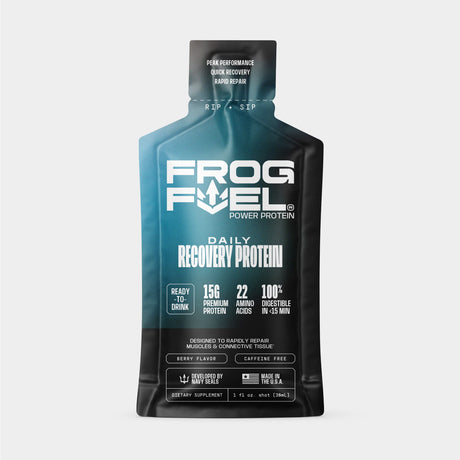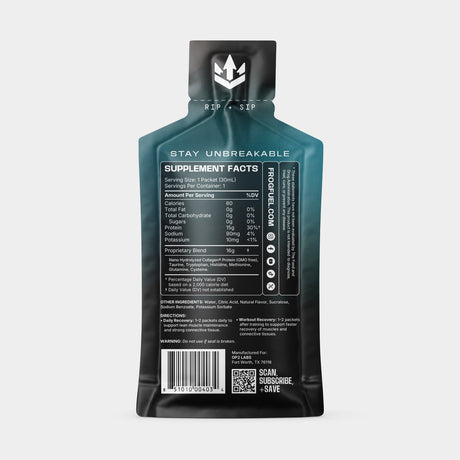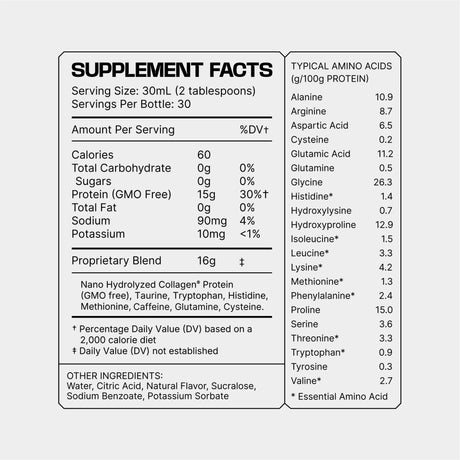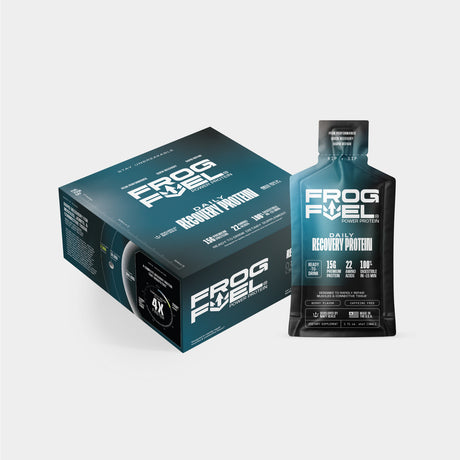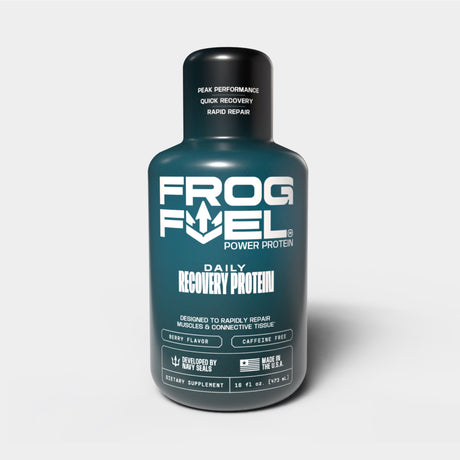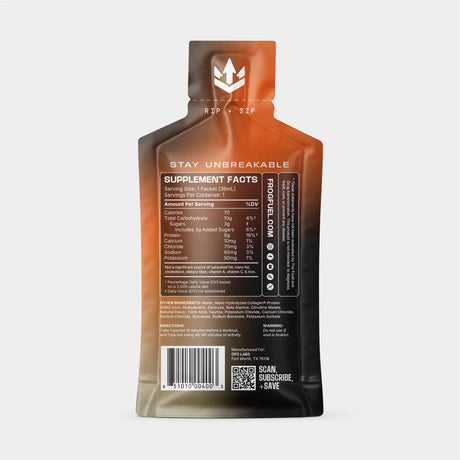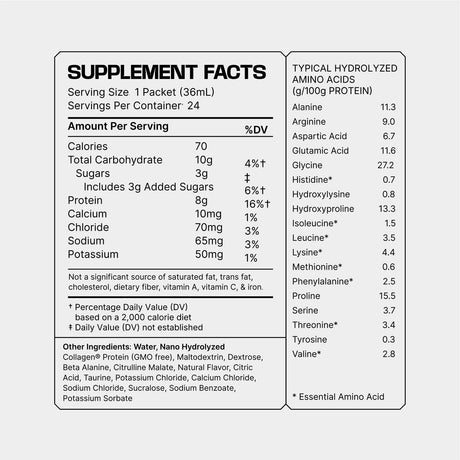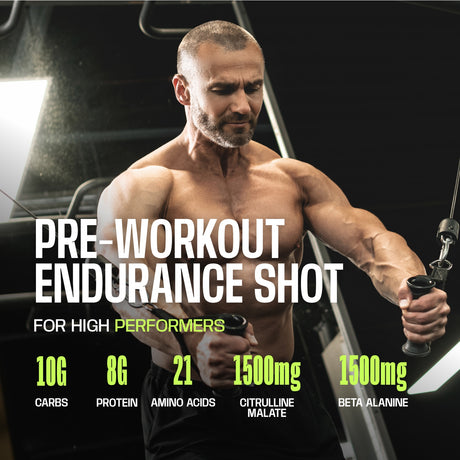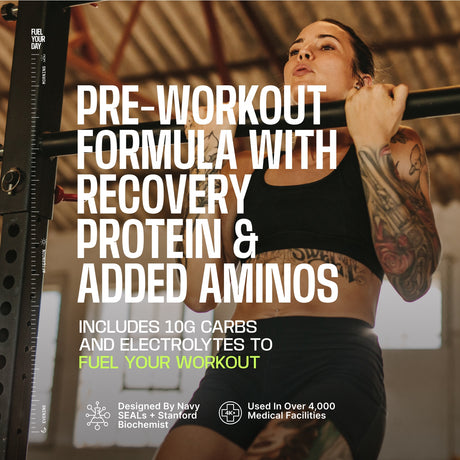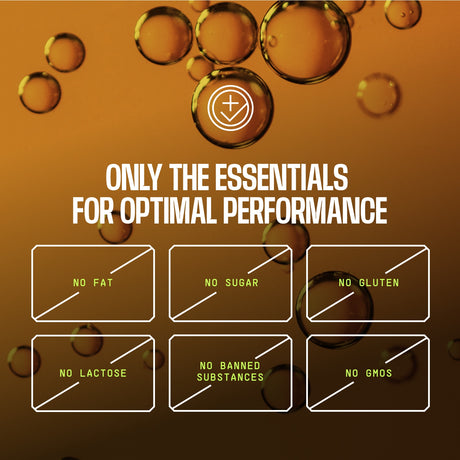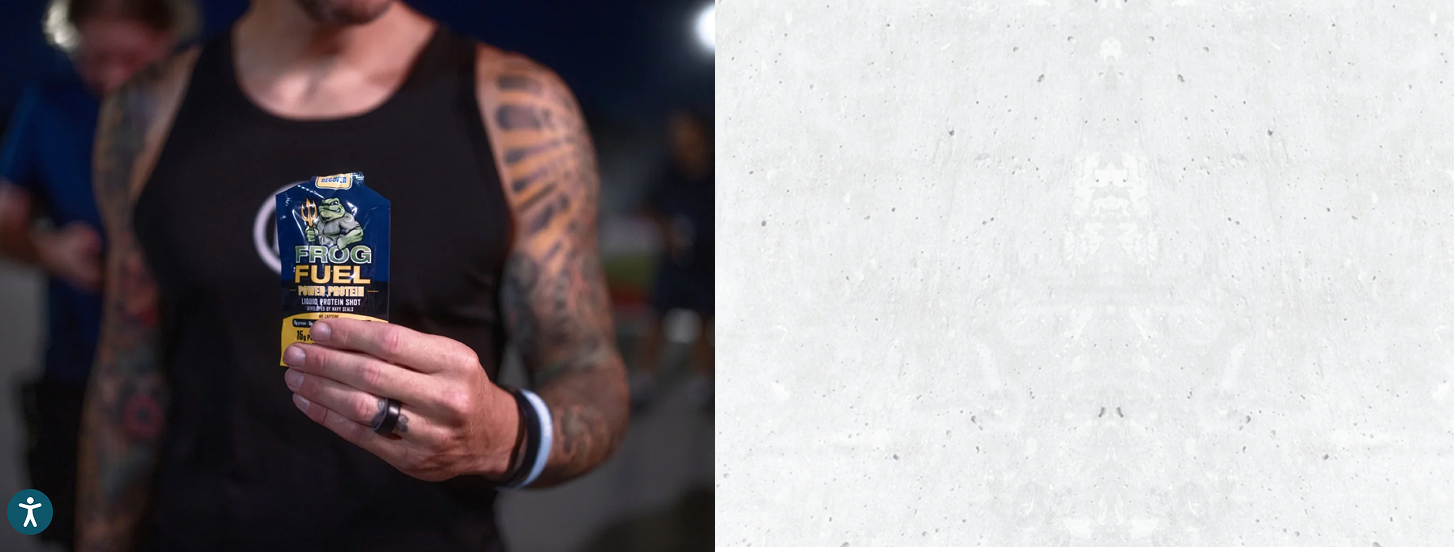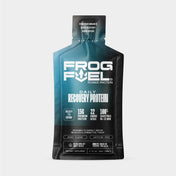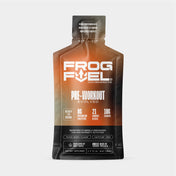You put a lot of planning into your daily workout routine, but how well do you plan your post-workout recovery? What you do after a strenuous exercise session will not only have a big impact on healing but on your future performance as well.
When you’re training for a big event, you should set aside time for recovery based on the amount of time and effort you spend training throughout the week.
In this article, we dive into the different rituals, foods, and habits you may want to include in your post-workout routine. These will support your body as it rebuilds muscle, strengthens bones, and prepares you for your next training session or event.
What causes muscle soreness?
When you put your body under the physical stress of a hard workout, it creates tiny micro-tears in your muscles. Your body will heal these tears with even stronger muscle fibers so that you end up with bigger, more powerful muscles.
But in order to heal back stronger, you need to actually give your body time to recover.
Sometimes a tough run or workout can leave you feeling fatigued, sore, and broken for days. This can make it more difficult to stay on track, especially for those spending multiple hours in the gym or on the road every day.
Some sources claim that prolonged fatigue is a sign of “overtraining.” While this may be the case, if a workout pushes you over the edge it’s because you are under-recovering.
You need to support your intense workouts with the right downtime routines.
Post-workout recovery can easily be overlooked - especially if you don’t consciously make an effort to focus on it. But that also doesn’t mean you should be spending days in bed, eating ice cream on the couch, or getting expensive treatments every day.
Post-workout recovery can be simple, and prioritizing it can work wonders for reducing the length of time you feel soreness and fatigue.
Here are some signs you are under-recovering from your workouts.
Signs you’re under-recovering
- You wake up feeling extremely achy
- It takes several days to recover from targeted soreness
- You’re sleeping 4-6 hours a night (or less)
- You’re tiring early in a workout
- You aren’t getting as many “highs” during a run
- Your goals are taking longer to reach than expected
- Your diet is sporadic and unplanned
If some of these symptoms sound like you, you probably need to improve your post-workout recovery routine. But no one wants to spend any longer in recovery than necessary, so let’s look at our top tips for breezing through the recovery period.
15 tips to speed up your post-workout recovery time
If you want to get the most out of a workout, it’s important to be intentional with your recovery. Here are our favorite tips for reducing the length and severity of your post-workout recovery.
1. Improve your sleep schedule
There’s no way around it. Effective post-workout recovery takes lots of high-quality sleep. Your body is incredible at healing itself, but it needs the time to do so.
The exact hours you need to sleep may vary because we are all unique. But, if you’re a high-performance athlete, you’ll likely need between 8-10 hours of shut-eye a night.
Confident you can get by on 4-6 hours of sleep per night? Challenge yourself by logging between 8-10 hours a night for two weeks and record the difference.
Athletes who get that extra sleep generally report faster speeds, stronger lifts, better accuracy in performance, improved mood, increased vigor, and less fatigue.
Routine is key for good sleep habits. Keeping the same sleep-wake schedule will help your body know when to sleep and when not to.
Try to go to bed and wake up at the same time all through the week. Set a simple pre-bed routine to wind down that includes disconnecting from electronics.
2. Stay hydrated
Staying hydrated is crucial for optimal muscle function and recovery. Water helps transport nutrients to cells and removes waste products which aids greatly in muscle repair.
You may be tempted to reach for a sports drink after your workouts. And, while it’s smart to replenish your electrolytes, you need to be aware of sports drinks nutrition facts. Some popular sports beverages may actually be detrimental to your health and performance.
Read labels carefully, and remember that nothing is a proper substitute for water – so make sure you are drinking plenty of it!
3. Try cryotherapy
Cryotherapy, aka “cold therapy,” is a technique where you expose part or all of your body to temperatures as low as negative 200-300 Fahrenheit for a short period of time.
Cryotherapy is used by professional athletes to decrease pain and muscle soreness. Some use it daily, but most athletes prefer to use it 1-2 times a week or once a month after a big race.
Try it once and see how you feel. The results should be almost immediate. Using cryotherapy to decrease muscle pain may help decrease recovery time after a competition or shorten your time between training sessions.
4. Use heat therapy
Just as the cold can be beneficial for your post-workout recovery, so can heat!
Applying heat increases blood flow, which relaxes your muscles and promotes the delivery of oxygen and nutrients to the area for repair. This can speed up the muscle recovery process.
Remember to use the heat in short durations (15-20 minutes) and to put some sort of barrier (like a thin towel) between your skin and the heat source to prevent burns.
5. Take an Epsom salt bath
Most athletes already know about Epsom salts, but if you don’t, you’re in for a treat! Epsom salt contains magnesium, which can be absorbed through the skin. Magnesium promotes muscle relaxation and reduces inflammation in your body.
Taking a 15-45 minute soak in Epsom salts can greatly reduce soreness and help you get back into your workouts more quickly.
6. Implement post-workout stretches
Stretching is imperative to maintaining flexibility and preventing muscle tears. It’s also a great way to cool down after a workout.
What type of stretches are best for post-workout recovery? This depends partly on what type of exercise you are doing.
If you are running, you should focus the majority of your stretching time working on your leg muscles (obviously).
Lifters should pay special attention to stretching out their arm, chest, and shoulder muscles to avoid muscle shortening and loss of movement.
Remember that you need to perform a variety of stretches to hit all the muscle groups in each area of your body.
7. Use a foam roller
Foam rolling (self-myofascial release) helps to release knots and tightness in your muscles. A quick session on a foam roller after your workout can improve your flexibility and reduce muscle stiffness.
8. Try an active post-workout recovery
There are a lot of benefits from adding some “active recovery” to your weekly routine. Moving in a more gentle way than your regular workouts can help keep things loose and improve blood flow.
Some great ways to do active recovery include long walks, yoga, zero incline jogs, cross-training, and more. The focus isn’t on getting your heart rate up or pushing your muscles, but rather keeping your body moving and using a full range of motion.
9. Increase your protein intake
Protein is essential for improving your post-workout recovery. That’s because in order for your body to perform muscle protein synthesis to repair your muscles, it needs to have protein stores to pull from.
If you are wondering whether to have protein before or after workouts, it can be beneficial to do either! If you are specifically working on improving your recovery times, then make sure to incorporate some form of protein into your diet within 30-60 minutes of your workout.
But what type of protein is best to take? Let’s take a closer look at two of the most popular options:
Collagen vs whey protein: Which is better as a post-workout food?
A common question people ask about protein supplements is whether they should use collagen protein vs whey protein after their workouts. Essentially, there are benefits to both types of supplements, but collagen wins over whey in several areas.
Collagen protein is easier on digestion, considering many people react negatively to dairy-based products. Collagen also digests more quickly than whey, unless digestive enzymes are added.
Finally, collagen strengthens and heals muscles, ligaments, and tendons without “bulking” you. Collagen protein is what your body uses to heal wounds and create new muscle fibers, so you will be actively providing your body with the resource it needs for recovery.
10. Eat shortly after your workout
Consuming nutrients shortly after exercise helps replenish glycogen stores, reduces muscle protein breakdown, and enhances your recovery time.
You can read our article on protein usage if you want to know how many grams of protein to use after your workout. But you shouldn’t rely on protein supplements alone.
Try to eat a healthy balance of:
- Protein (at each meal)
- Carbohydrates (after training is the best time for a high-carb meal)
- Fiber
- Probiotic foods (sauerkraut, miso, yogurt)
- Healthy fats
11. Use healing supplements
While the bulk of your nutrition should come from whole foods, certain supplements may be important for high-intensity athletes to maximize their post-workout recovery.
Here are our favorite supplements for improving muscle recovery:
-
Collagen: Collagen is the most abundant protein in the human body. Collagen supplements can help to rebuild bones, tendons, ligaments, muscles, and other tissues. Because we don’t typically eat collagen in our diet, supplementing with a high-quality, fast-absorbing collagen protein is necessary to gain all the benefits.
-
BCAAs: Branched-chain amino acids are the building blocks of all proteins and, as a result, are key to muscle recovery/maintenance.
-
Omega-3 Fatty Acids: This type of fat is an anti-inflammatory that can reduce inflammation in the muscles, airway, lungs, and other parts of the body. Most people get this from fish oil supplements like Cod Liver Oil.
-
Probiotics: The most important part of digestion is absorption. If you aren’t absorbing the food you eat, you aren’t getting the nutrients. Probiotics are key to good digestion.
- Citrulline malate: There are many citrulline malate benefits, but this supplement is primarily used to boost athletic performance and speed up post-workout recovery times.
12. Wear compression garments
If your muscles are particularly sore, wearing compression garments may enhance blood circulation, reduce muscle swelling, and accelerate the removal of metabolic byproducts. This can help to speed up your post-workout recovery time.
13. Manage your stress
Stress can make or break you. In moderation, stress keeps you motivated, increases work ethic, and signals you’re in a “growth” zone. However, if stress gets out of control or becomes constant, it can lead to inflammation, sickness, and poor post-workout recovery.
The hormone that circulates in your body when you’re under stress is called cortisol. Cortisol also plays a role in your sleep/wake cycle. When cortisol levels become elevated and stay that way, it can lead to breakdown and a weakened immune system.
You know your life and your body best. Take inventory of how you feel, how you spend your time, how busy you are, and how “stressed” you feel.
A few keys to managing stress successfully are:
- Varying your hard and easier workout days.
- Using active post-workout recovery (see above)
- Signing up for regular counseling
- Spending more time reading books and uplifting content instead of scrolling social media
- Learning to say “no”
- Focusing on building and maintaining your important relationships
- Doing something to help another person
- Going easy on the caffeine intake (too much can worsen anxiety/stress)
- Knowing what helps you calm down/decompress
14. Give yourself some hydrotherapy
We spoke about the benefits of hot and cold therapies above, and you can give yourself a small taste of both during your shower! Alternating between hot and cold water exposure in the shower can enhance your blood circulation and alleviate muscle soreness.
15. Get a sports massage
Last, but certainly not least, a professional sports massage can work wonders for sore muscles. A talented masseuse knows exactly how to work out those tricky knots and improve your circulation.
Plus, a massage is just so darn relaxing!
If you’re having a rough time during post-workout recovery, book yourself a massage as a treat.
Get back into action!
Now you have all the information you need to breeze through your post-workout recovery.
You should focus on getting high-quality sleep, eating whole, nutrient-dense foods and protein, and utilizing other gentle therapy and recovery methods. If you’re doing this, you should be able to work out more often without feeling overtired or sore.
One of the best things you can add to your post-workout recovery routine is a regular hydrolyzed collagen supplement.
What is hydrolyzed collagen? It is collagen protein that has been broken down into easy-to-digest pieces through a chemical process called hydrolysis. Hydrolyzed protein is much easier for your body to absorb and utilize during your recovery process.
Of course, there are so many liquid collagen benefits beyond boosted recovery. It can help with injury prevention, improve joint health, heal surgical wounds, and even help with hair loss!
Adding this simple supplement to your routine could be the answer you need for speeding up your post-workout recovery.
And with the single-serving liquid protein shots from Frog Fuel, it’s easy to throw your supplement in your pocket or gym bag and get right back into the sport you love most.
FAQs about post-workout recovery
Here are some answers to the most commonly asked questions about muscle recovery:
Is 24 hours enough for muscle recovery?
While individual factors vary, 24 hours may not be sufficient for complete muscle recovery after intense exercise. Adequate sleep, nutrition, and workout intensity can all impact your post-workout recovery time.
How many days should I spend on recovery?
The ideal recovery duration varies but incorporating rest days or low-intensity activities between intense workouts is crucial.
Depending on factors like fitness level and workout intensity, having 1-3 recovery days per week can be beneficial for overall muscle repair and performance improvement.
If you are participating in a big event like a marathon or triathlon, you may want to take about a week of recovery/active recovery before resuming your normal training schedule. In the end, it is most important to listen to your body.
How do I prevent injury during muscle recovery?
To prevent injuries during post-workout recovery, prioritize proper warm-ups, post-workout stretching, regular collagen supplementation, and listening to your body’s signals.
Is it dangerous to not allow muscle recovery time?
Yes, not allowing sufficient muscle recovery time can lead to overtraining, increased risk of injury, and worse overall performance. If you continue to overtrain, it can lead to fatigue, chronic soreness, and even a weakened immune system.
How long does muscle recovery take?
Generally, it takes 24-48 hours for muscles to recover after strength training. For more intensive workouts or workouts that target specific muscle groups, full recovery may take 48-72 hours.
This is just a general guideline. Post-workout recovery looks different from person to person.
Is it okay to work out when sore?
Trust your body to answer this one for you. If you are sore, it is probably safe to engage in low-intensity activities, such as light cardio or flexibility exercises. This can promote blood flow and alleviate your soreness.
If you are really sore, it’s probably best to avoid intense workouts that target the same muscle groups until the soreness has become more manageable.


